Introduction
Maintaining comprehensive, accurate tenant records is essential for smooth property operations, regulatory compliance, and tenant satisfaction. Whether you’re verifying identities, tracking rent payments, or documenting move-in condition, attaching the right file types ensures information is organized, accessible, and tamper-proof. But not all file formats serve every purpose equally well. In this detailed guide, we’ll explore the range of document, spreadsheet, image, multimedia, and data formats you can attach to tenant records, explain when each is most appropriate, and share best practices for naming, security, and version control—so your property management stays efficient and audit-ready.

1. Document Formats for Legal and Text Records
1.1 PDF: The Gold Standard for Signed Documents
- Why use PDFs?
- Preserves original formatting and layout
- Embeds electronic or scanned signatures securely
- Resistant to accidental edits or corruption
- Common attachments:
- Lease agreements and addenda
- Privacy disclosures and consent forms
- Tenant identification scans (driver’s license, passport)
- Best Practices:
- Flatten forms after signature to prevent changes
- Compress large PDFs to under 5 MB for faster uploads
- Tag documents with metadata (date, type) if your system supports it
1.2 Microsoft Word and Rich Text for Editable Drafts
- Use cases: Drafting or revising leases, drafting notice letters, collaborative editing
- File extensions:
.doc,.docx,.rtf - Tips:
- Enable “track changes” so you retain version history
- Convert finalized documents to PDF before archiving
1.3 Plain Text for Quick Notes
- When to choose: Internal memos, system-generated logs, or compatibility with legacy tools
- Extension:
.txt - Considerations: Lacks formatting, so limit to unstructured notes that don’t require layout
2. Spreadsheet Formats for Financial and Tabular Data
2.1 Excel (.xls/.xlsx) for Advanced Financial Tracking
- Strengths:
- Built-in formulas, pivot tables, and multi-sheet workbooks
- Ideal for rent ledgers, payment schedules, and fee calculations
- Best practices:
- Protect formula cells to prevent accidental edits
- Use data validation (drop-downs, date pickers) to reduce entry errors
- Archive older sheets in a read-only format after each lease cycle
2.2 CSV (.csv) for System Interoperability
- Why use CSV?
- Simple, plain-text representation of tabular data
- Compatible with nearly every database, accounting package, and integration tool
- Typical uses:
- Bulk import or export of tenant contact lists
- Integration with external accounting or CRM systems
- Naming tip: Include date and data scope in the filename (e.g.,
2025-07_Tenant_Payments.csv)
3. Image and Scan Formats for Visual Documentation
3.1 JPEG (.jpg/.jpeg) for Photographic Records
- Best for: Move-in/move-out condition photos, unit damage evidence, property survey images
- Pros:
- High compression with acceptable image quality
- Small file sizes ideal for mobile uploads
- Cons:
- Lossy compression can degrade with repeated edits
- Guidance:
- Aim for 300 dpi resolution to capture detail
- Use descriptive filenames (e.g.,
Unit12_KitchenSinkLeak.jpg)

3.2 PNG (.png) for Screenshots and Diagrams
- Strengths:
- Lossless compression preserves sharp text and graphics
- Supports transparent backgrounds for overlays
- Use cases:
- Annotated floor plans, system-generated screenshots, digital signatures
3.3 TIFF (.tif/.tiff) for Archival-Quality Scans
- Why TIFF?
- Ideal for long-term preservation of critical documents
- Supports multiple layers and high bit-depth color
- Trade-off: Very large file sizes; reserve for legal-grade scans of original signed leases
- Tip: Archive TIFFs externally (off-site storage) to manage system storage capacity
4. Multimedia and Specialized Formats
4.1 Video (.mp4) for Virtual Tours and Inspections
- Applications:
- Walkthrough recordings to document unit condition
- Remote inspections when in-person visits aren’t feasible
- Considerations:
- Keep clips short (under 2 minutes) to minimize file size
- Include time/date watermark or overlay for audit purposes
4.2 Audio (.mp3) for Recorded Conversations
- Use cases:
- Tenant interviews, complaint call recordings, verbal disclosures
- Compliance: Always obtain written consent before recording; store alongside the consent form in PDF
4.3 Data Exchange Formats (JSON, XML)
- When to attach:
- Exported data from third-party systems (maintenance logs, IoT sensor reports)
- Integration payloads for automated workflows
- File extensions:
.json,.xml - Best practice: Validate against your system’s schema before attaching to ensure compatibility
5. Best Practices for File Management
5.1 Consistent Naming Conventions
- Template:
YYYY-MM_Type_TenantName.ext- Example:
2025-07_LeaseRenewal_Smith.pdf
- Example:
- Avoid: Special characters and spaces; use hyphens or underscores
5.2 Version Control and Audit Trail
- Do not overwrite: Always upload new versions as separate attachments (e.g.,
Lease_v2.pdf) - Metadata tagging: Leverage PMS custom fields—document date, uploader, status—to simplify filtering
5.3 Security and Compliance
- Access controls: Restrict sensitive attachments (credit reports, ID scans) to authorized roles only
- Encryption: Enable at-rest and in-transit encryption if your platform supports it
- Retention policies: Implement automatic archival or deletion in line with local regulations and company policy

5.4 File Size and Performance
- Optimize images: Resize to necessary dimensions before upload to reduce load on your system
- Segment large scans: Split multi-page TIFFs into logical sections for faster retrieval and viewing
Conclusion
Attaching the right file formats to tenant records transforms your property-management system into a robust, compliant repository—powering efficient renewals, audits, and day-to-day operations. PDFs and Word docs handle legal agreements and editable drafts; Excel sheets and CSVs capture financial transactions; JPEGs, PNGs, and TIFFs document property condition; and multimedia and structured data formats enable dynamic workflows and integrations. By enforcing clear naming conventions, maintaining version history, and safeguarding files with strong security and retention policies, you’ll keep tenant files organized, accessible, and compliant. Start today by auditing your current attachments: spot any unsupported formats or disorganized naming, and take steps to standardize and optimize—your future self (and audit teams) will thank you.
